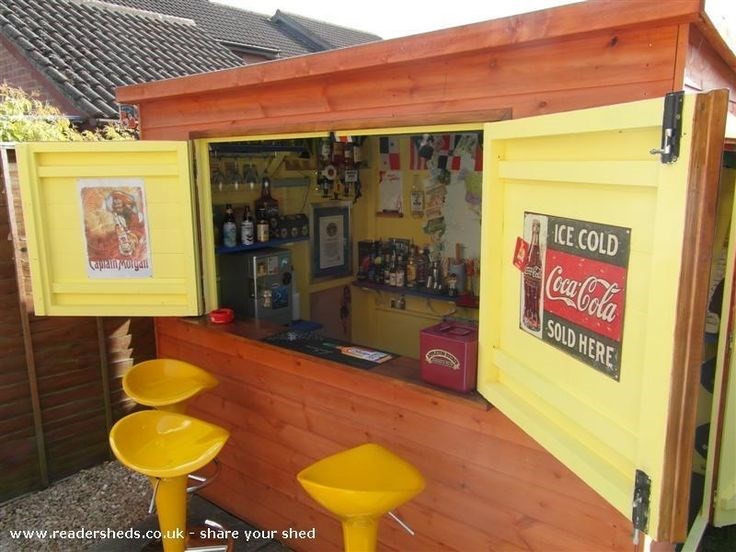Move over man caves.
Maledom’s realm of refuge is going outside.
The once humble shed — long-used as a repository for all manner of garden implements in what usually becomes a damp, dark and musty, spider-laden space at the bottom of the garden — is now being re-purposed as a place for a home office, hobby room and even a comfy bar area to entertain guests.
Joseph Neely, president of The Indoor Outdoor Guy Design and Construction firm in east Richmond, told the News he’s seeing a trend to maximize a home’s space by converting shed areas into more than just storage for the lawn mower, spades, bags of fertilizer and unwanted garden gnomes.
Homeowners are getting more practical — especially with continued high real estate prices in the Lower Mainland — and making as much of their property usable.
“A lot of people, now that housing prices have surged so much, are building sheds to use them as an extension of their home,” said Neely. “And they are, most often, building them as heated storage rooms with insulation so they are much more like a house. And that way, it can basically function as an additional room.”
And while there are limitations on what can be done, given zoning and permit restrictions, clients are being creative on what roles their revamped shed spaces fill.
“If you need a sun room, hobby room, office or even just more storage that is heated to provide humidity control, a shed can be that,” Neely said.
But don’t think that a simple garden shed kit ordered from a local big box home improvement store can do the job. Those are fine for traditional garden shed uses, Neely said. Proper, sturdier construction is required if the desire is to have a structure that can withstand the elements and even possibly be a spot to serve up a few pints and clink together a few cocktail glasses.
Bar sheds are an increasingly popular item for homeowners, especially in the U.K., where the rise in smoking regulations in public bars has been offered as one reason why home-based taverns are popping up with regularity.
The web site ReaderSheds.Co.UK is a hub for what are called “sheddies” who share pictures of their own creations, many of which come complete with bar stool seating, small fridges and shelving packed with enough liquor bottles to put their favourite local watering hole to shame.
Not fond of a tipple?
There are also shed owners on the web site who have preferred to transform their spaces into small reading rooms or libraries.
But the trend for bard sheds is apparently heading to North America, although Neely has yet to have a client request him to build one.
“I’ve had the odd request for a cabana where you have room for a small fridge and shelving adjacent to a pool,” he said.
But whatever you end up using your new shed for, don’t expect it to come cheap, if you want it to be of decent quality.
Neely said firms like his charge about $150 a square foot for a heated shed that can be used for storage and other uses.
While that’s more than the average price of simple shed kits and the required labour to build them, it’s still far cheaper than regular home construction companies that would charge at least double that if they are building an extension to your home.
“Sheds are a cost-effective alternative if you need the room for an office to escape the kids or require that extra storage space because you are already renting a portion of your home,” Neely said.
So, a little separation between home and shed can be easier on your wallet, yet still create a similar space.
Just don’t get the idea that you can use your finely appointed shed as an additional bedroom. That would require a full building permitting process with minimum size requirements that outstrip a normal 10 by 10-foot shed.
“There are some people trying to use sheds as (home) rentals. You’re not allowed to do that,” Neely said.
Sheds that cover less than 105-square-feet do not require a building permit in most cities.
But homeowners still need to follow local zoning requirements, such as setbacks from property lines and height restrictions for their structures.



